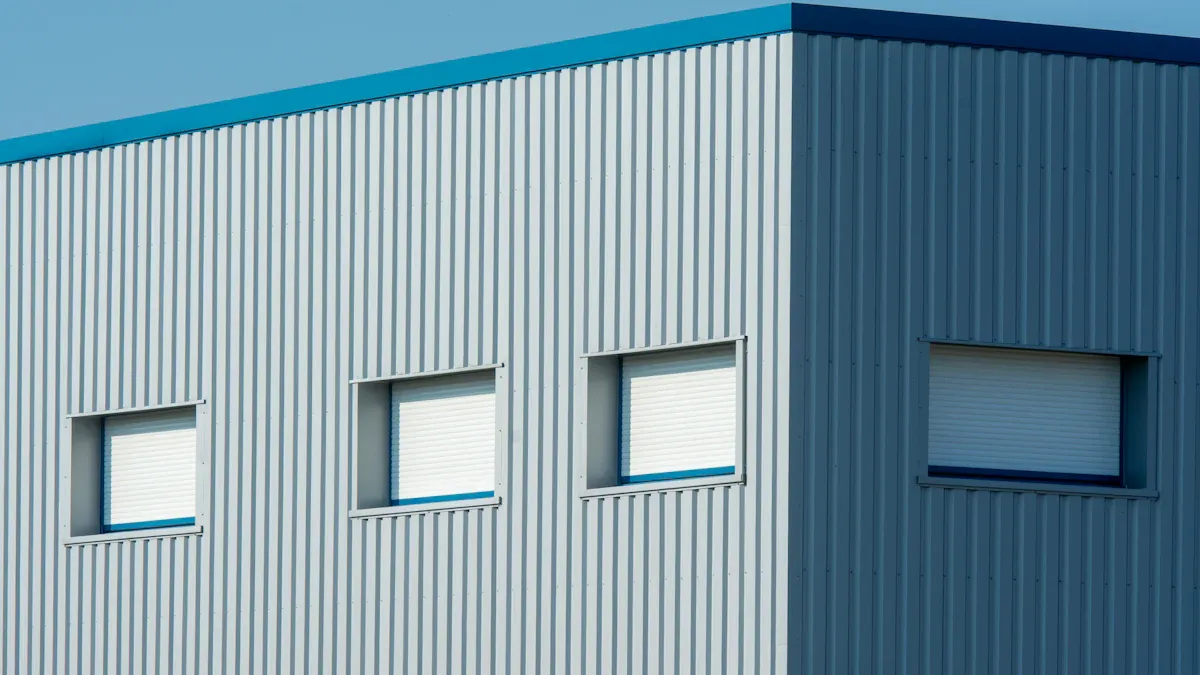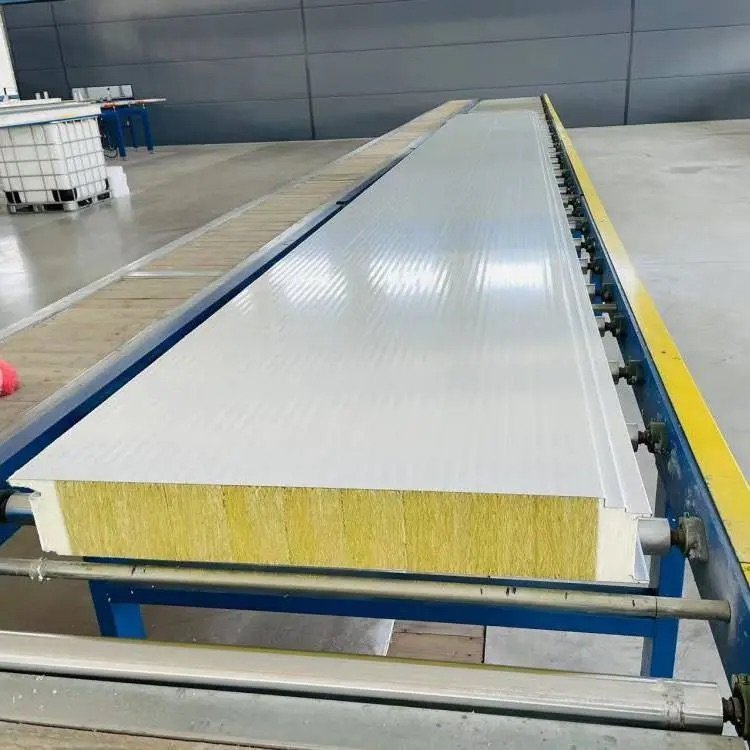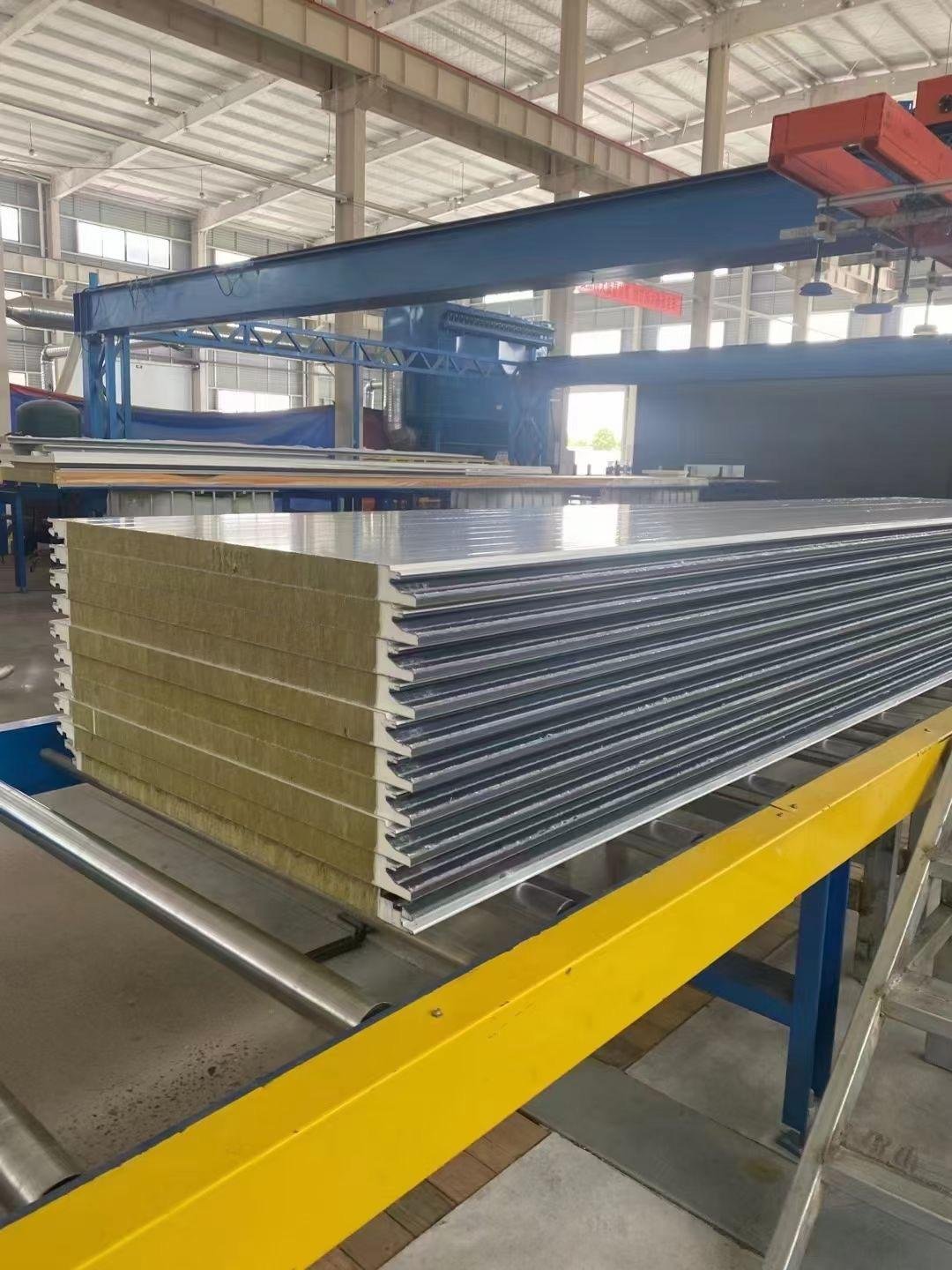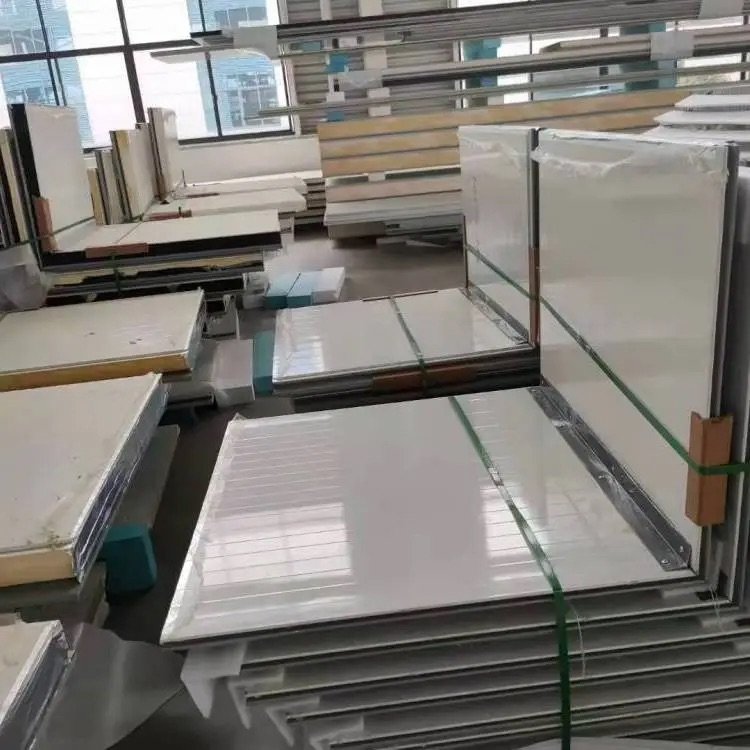
Choosing the right insulation is crucial for safety and performance, and understanding the difference between Rockwool and PUF is essential as they cater to different needs. Rockwool excels at fire resistance, boasting an A-level fire rating, while PUF has a lower B1-level fire rating. When it comes to thermal performance, PUF is more effective at keeping heat in or out, with a thermal conductivity of 0.025–0.028 W/m·K, which is lower than Rockwool’s 0.041–0.045 W/m·K. Additionally, PUF is superior in preventing water ingress, whereas Rockwool may require additional waterproofing. However, Rockwool outperforms PUF in sound insulation and has a longer lifespan. In terms of weight, Rockwool is denser at 120 kg/m³ compared to PUF’s lighter 40 kg/m³. These differences between Rockwool and PUF are key factors to consider when selecting the right material for your project.
Key Takeaways
Rockwool resists fire well, great for high-risk places. It can handle heat up to 1000°C without burning.
PUF is great for keeping heat out. It works well in energy-saving buildings and cold storage.
PUF is better at staying waterproof. It doesn’t need extra treatments, but Rockwool might need help in wet areas.
Rockwool is heavier and blocks sound better. It’s good for loud places like factories and theaters.
Think about what your project needs, like fire safety, insulation, or cost, to pick Rockwool or PUF.
Fire Resistance: Comparing Rockwool and PUF
Rockwool’s Fire Resistance Strength
Rockwool is a top choice for fire safety. It does not burn and can handle heat up to 1000°C. This makes it great for projects needing strong fire protection. Tests show Rockwool slows heat transfer well. For example:
Rockwool’s density (32–152 kg/m³) helps delay heat for 60–80 minutes before steel heats up.
In tests, Rockwool lost no mass at 300°C, only 5% at 500°C, and about 10% at 800°C.
These features make Rockwool a solid pick for fire-safe spaces.
PUF’s Fire Resistance Features
PUF has fire retardants but is less fireproof than Rockwool. It can break down under high heat and needs the fire source removed to stop damage. PUF panels have a B1 fire rating, meaning they resist flames but are not fully fireproof. This works for places with lower fire risks.
Picking the Right Material for Fire Safety
When choosing Rockwool or PUF, think about your project’s needs. The table below compares their fire resistance:
Material | Fire Resistance Level | Description |
|---|---|---|
Rockwool | Does not burn, handles high heat without catching fire. | |
PUF | B1-level | Resists flames but needs fire source removed to stop burning. |
For high fire-risk areas, Rockwool is the better choice. PUF works for places with low fire danger. Always check your project’s fire safety needs before deciding.
Thermal Insulation: Comparing Rockwool and PUF
Rockwool’s Thermal Insulation Efficiency
Rockwool is good for keeping temperatures steady. Its thermal conductivity is 0.041–0.045 W/m·K, which is higher than PUF. This means it is less effective at stopping heat transfer but still works well in hot conditions. Tests using the guarded hot plate method proved its insulation ability. Denser Rockwool slows heat transfer better. For example, materials with a density of 32–152 kg/m³ showed improved insulation. This makes Rockwool a solid option for projects needing heat protection in tough conditions.
PUF’s Superior Thermal Conductivity
PUF is excellent at stopping heat transfer. Its thermal conductivity is 0.025–0.028 W/m·K, which is better than Rockwool. This makes PUF perfect for places like cold storage or freezers. Its lightweight design helps it insulate well without adding much weight. PUF panels keep indoor temperatures steady, making them great for energy-saving buildings. They work well in both homes and businesses needing strong insulation.
Best Use Cases for Thermal Insulation
Choose Rockwool or PUF based on your project’s needs. Rockwool is best for areas with big temperature changes or high heat. For example, it works well in factories or furnace walls. PUF is better for places needing strong insulation, like refrigerated warehouses or eco-friendly homes. Moisture can affect insulation performance. Studies show moisture can lower Rockwool’s effectiveness. Always check the environment before deciding which material to use.
Waterproofing: Rockwool vs PUF
Rockwool’s Water Resistance and Mold Prevention
Rockwool resists water because it is hydrophobic. It pushes water away and avoids soaking up moisture. This helps stop mold from growing and keeps its insulation working well. Loose rockwool is great at handling moisture problems. But, rockwool panels might need extra waterproofing in very wet places or areas with high humidity.
Main benefits of rockwool’s water resistance:
It does not soak up water.
Mold is less likely to grow on it.
It stays good at insulating even when damp.
PUF’s Waterproofing Features
PUF is excellent at keeping water out. PU sandwich panels are very moisture-resistant, making them perfect for wet areas. Unlike rockwool, PUF does not need extra waterproofing treatments. This makes it a top choice for cold storage, roofs, and walls in wet places.
PUF’s waterproofing benefits:
Better at stopping water than rockwool.
Keeps insulation working even when wet.
Lightweight, making it easy to install in damp areas.
Choosing the Right Material for Wet Areas
Think about waterproofing when picking between rockwool and PUF. The table below shows their differences:
Material | Waterproofing Ability |
|---|---|
PU Sandwich Panels | Great at resisting moisture |
Rockwool Panels | Needs extra waterproofing in wet areas |
For very wet places, PUF is the best choice. Rockwool works fine in less humid areas but may need extra care. Check your project’s needs to pick the right insulation material.
Weight and Installation: Rockwool vs PUF
Rockwool’s Density and Installation Process
Rockwool is made of tightly packed fibers. Its density ranges from 32 to 152 kg/m³, making it heavier than PUF. This density helps Rockwool block heat, sound, and fire. Below are Rockwool’s key features:
Feature | Details |
|---|---|
Density | Thick fibers create a dense mat for insulation. |
Thermal Resistance | R-value of R-4 to R-4.3 per inch for heat control. |
Fireproofing | Does not burn and handles high temperatures. |
Sound Blocking | Dense fibers absorb sound very well. |
Water Resistance | Pushes water away to avoid mold problems. |
Durability | Lasts over 50 years and uses recycled materials. |
Rockwool can be installed using a blowing machine for large areas. DIYers can handle small projects, but professionals are better for big jobs. Its weight makes handling harder, but it provides lasting insulation.
PUF’s Lightweight Nature and Easy Installation
PUF is light, with a density of about 40 kg/m³. It is easier to carry and install than Rockwool. PUF panels lock together, creating a tight seal for insulation. This design lowers labor costs and speeds up construction.
PUF is great for quick projects without losing strength. It works well in energy-saving buildings, cold storage, and places needing waterproofing. Its simple installation makes it popular for many uses.
Which Material is Easier to Use?
Think about your project’s needs when choosing Rockwool or PUF. Rockwool blocks sound and fire better but takes more effort to install. PUF is lighter and faster to set up, making it ideal for tight schedules.
For long-lasting insulation, pick Rockwool. For quick and easy installation, choose PUF. Match the material to your project’s goals for the best results.
Sound Absorption: Comparing Rockwool and PUF
Rockwool’s Excellent Noise Control
Rockwool is great for reducing noise. Its fibers absorb many sound frequencies. This makes it perfect for cutting down unwanted noise. Made from basalt rock and recycled materials, it has strong soundproofing abilities. Rockwool panels work well in noisy places like factories, theaters, and music studios.
Research shows Rockwool is very effective for soundproofing. For example:
Walls with Rockwool block sound very well.
Its dense fibers trap sound waves, stopping them from passing through.
If you need to reduce noise, Rockwool is a great option.
PUF’s Limited Soundproofing Ability
PUF is not as good at blocking sound. Its lightweight design and closed cells make it less effective. PUF works better in places where soundproofing is not a big need.
PUF can reduce some noise but not as much as Rockwool. It is not ideal for loud spaces like music studios or factories. However, it can still be used in homes or offices for basic insulation.
Best Uses for Soundproofing
Choose Rockwool or PUF based on your project’s needs. Rockwool is best for places needing strong noise control. Use it in:
Factories with loud machines.
Theaters or auditoriums needing clear sound.
Homes near busy streets or airports.
PUF is better for areas where soundproofing is less important. It works well in:
Home walls and ceilings.
Offices with normal noise levels.
General insulation projects.
By knowing what each material does best, you can pick the right one.
Cost Comparison: Rockwool vs PUF
Rockwool’s Price and Benefits
Rockwool is great for tough, fire-safe insulation projects. Its dense structure and soundproofing make it worth the price. It costs more than PUF because of how it’s made. Installing Rockwool can also raise labor costs, especially for big jobs. But, it lasts a long time and needs little upkeep. This makes it a smart choice for projects needing durability and fire safety.
PUF’s Low Cost and Easy Installation
PUF is a cheaper insulation option. Its light weight and simple setup lower labor costs. PUF panels save energy by keeping heat in or out. Studies show PUF costs less than materials like aluminum panels for thermal insulation. The table below shows why PUF is cost-friendly:
Feature | Description |
|---|---|
Installation Cost | Easier to install, so labor costs are lower. |
Energy Savings | Keeps energy bills low with strong insulation. |
Cost-Effectiveness | Great for homes, offices, and cold storage needing insulation. |
These features make PUF a top pick for budget-friendly projects.
Best Value for Different Needs
Pick Rockwool or PUF based on your project’s goals. Rockwool is best for fireproofing, soundproofing, or long-lasting use. PUF works better for tight budgets or places needing strong thermal insulation. For example, PUF is great for eco-friendly buildings or wet areas. Think about your needs to choose the best material for your money.
Durability and Longevity: Rockwool vs PUF
Rockwool’s Long-Term Strength
Rockwool is very strong and lasts a long time. It can stay effective for over 50 years, much longer than many other materials. Its thick structure makes it tough and reduces the need for replacements. Rockwool is also eco-friendly because it can be fully recycled. Using rockwool helps reduce waste and supports green building.
Rockwool works well even in tough conditions. It repels water, stopping mold and keeping its insulation strong. This makes it a smart choice for projects needing durable insulation that lasts for decades.
PUF’s Lifespan and Care Needs
PUF panels are also durable when installed and cared for properly. They resist moisture and pests, keeping their performance steady over time. In factories, PUF is valued for its strength and ability to save energy. This lowers maintenance needs and improves efficiency.
PUF works great in extreme conditions. It handles moisture better than rockwool, making it ideal for wet places. This makes PUF a top pick for cold storage and energy-saving buildings. With good care, PUF can provide reliable insulation for many years.
Which Material Lasts Longer?
Both rockwool and PUF have their own strengths. Rockwool is better for fire safety, soundproofing, and long-term durability. It also stops mold, keeping its insulation effective.
PUF is best for wet areas and places needing strong thermal insulation. Its lightweight design and toughness lower maintenance costs. For big industrial projects or damp environments, PUF is a great choice.
Pick the material that fits your project’s needs. Rockwool is ideal for fire safety and noise control. PUF works better for wet areas or large-scale uses.
Applications: Rockwool Sandwich Panels and PUF
Where Rockwool is Used
Rockwool panels are great for projects needing fire safety, soundproofing, and heat control. They are commonly used in:
New Buildings and Renovations: Rockwool fits walls and ceilings, cutting noise and keeping heat steady.
Tall Buildings: Its fireproof nature makes it safe for high-rise structures.
Schools and Hospitals: These places use Rockwool for quiet spaces and fire protection.
Data Centers: Rockwool helps manage heat and reduces noise from machines.
Farming and Hydroponics: It supports plant roots and controls water in greenhouses.
Eco-Friendly Buildings: Rockwool improves energy savings and meets green building rules.
These uses show how Rockwool works well in tough and safe projects.
Common Uses of PUF
PUF panels, also called polyurethane panels, are lightweight, waterproof, and energy-saving. They are often used in:
Cold Storage: PUF keeps temperatures steady in freezers and storage units.
Homes and Offices: It lowers energy bills by keeping heat in or out.
Factories: PUF insulates walls and roofs, saving energy in industries.
Roofs and Walls: Lightweight PUF is easy to install and blocks water.
Temporary Buildings: PUF is portable and quick to set up for shelters.
PUF panels are affordable and perfect for fast, energy-efficient projects.
Knowing how Rockwool and PUF differ helps you choose wisely. Rockwool is great for fire safety, blocking noise, and lasting a long time. It works best in places with high fire risks or lots of noise. PUF is better at keeping heat in or out, stopping water, and saving money. It’s ideal for cold storage, eco-friendly buildings, or wet areas. Think about what your project needs, like fire safety, cost, or insulation. Picking the right material gives you better results and saves money over time.
FAQ
What is the main difference between Rockwool and PUF?
Rockwool is great for fire safety and blocking noise. PUF is better for keeping heat in or out and stopping water. Use Rockwool for fireproofing and quiet spaces. Pick PUF for energy-saving buildings or wet areas.
Can PUF be used in high-temperature environments?
PUF is not good for very hot places. It does not resist fire as well as Rockwool. Use PUF where keeping heat steady and stopping water are more important than fire safety.
Is Rockwool more expensive than PUF?
Yes, Rockwool costs more than PUF. Its strong and long-lasting design makes it worth the price. PUF is cheaper and works well for lightweight and energy-saving projects.
Which material is better for soundproofing?
Rockwool is best for blocking noise because of its thick fibers. PUF can reduce some noise but is not good for loud spaces.
Can PUF panels be recycled?
PUF is not as eco-friendly as Rockwool. Recycling PUF is hard, but Rockwool can be fully recycled. Rockwool is better for green building projects.







